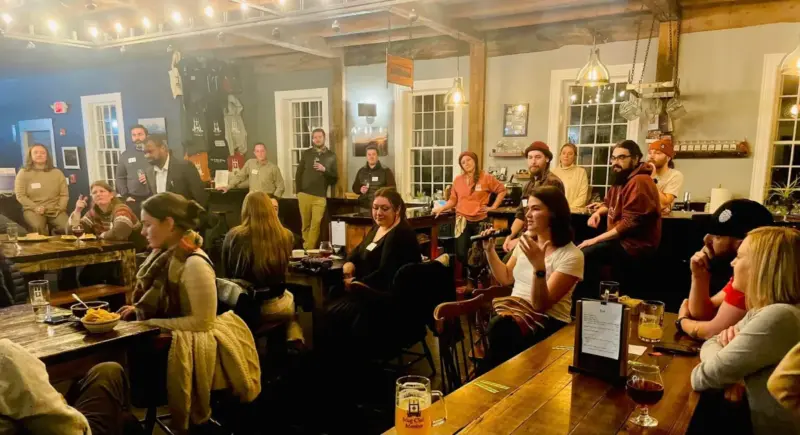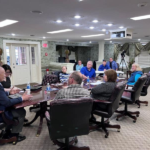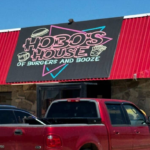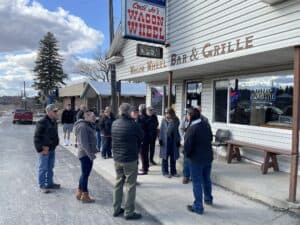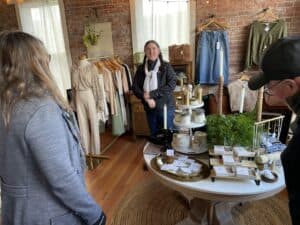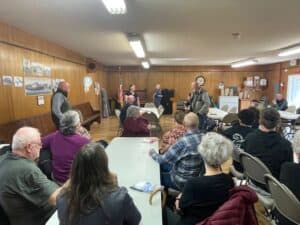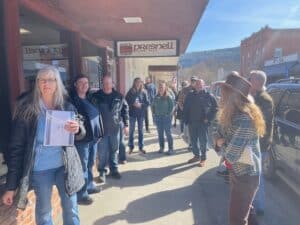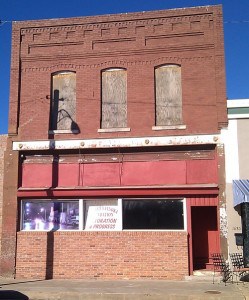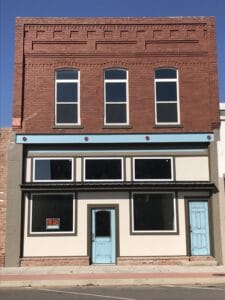Uncategorized
Make a “What to do in…” Pinterest Board
— How many times have you heard it? Someone lamenting, “There’s nothing to do here!” Worse yet, hearing someone tell visitors that. “What is there to do around here?” “Nothing, really. I don’t know.” Enough with that. Let’s give people an easy way to answer, and let’s do it the Idea Friendly way. Make a […]

Make your “What to do in…” Pinterest Board today!
—
How many times have you heard it? Someone lamenting, “There’s nothing to do here!”
Worse yet, hearing someone tell visitors that. “What is there to do around here?” “Nothing, really. I don’t know.”
Enough with that. Let’s give people an easy way to answer, and let’s do it the Idea Friendly way.
Make a “What to do in (town)” Pinterest board
It’s simple to do. Make a new board. Call it “What to do in” and the name of your town.
Then start pinning everything there is to do in your town. All the tourism things, all the lodging, all the events go on this board.
Add the murals, the public art and the creative studios.
Don’t miss the eateries, the breweries, the wineries, and the local hangout spot.
Hot tip: Make it a group board.
You don’t have to know everything if you’ll invite others to help. That’s Gathering Your Crowd in the Idea Friendly Method.
Build Connections to find out who they know, what attractions they like, and how they see your community.
The last part is Take Small Steps, and folks, making a Pinterest board is a small step.
An enduring trend
Since it launched in the 2010s, Pinterest has grown and endured as a social tool that generates action from people of all ages. Each year, their trend reports reveal what people are searching and pinning. Take a look at the Pinterest influence on rural tourism trends and small business trends.
Promote your board in your town
Yes, visitors will find it when they search for what to do in your town, but locals will have to be told about it. Promote your board in your newsletter and all your media. Bring it up at gatherings. Email it to friends and ask for ideas.
Make a poster promoting it with a QR code and hang it in convenience stores, motels and all around town.
Take Small Steps
You can start today, with just a few pins. You’re already online, so why not do it now?
New sidewalk sales idea: Sell through the fence
In the small town of Duck Lake, Saskatchewan, Marilyn Pope Francis ran a restaurant with a fenced patio for tables and chairs. She set up hot serving dishes and a cold drinks station in the gazebo to serve customers. Here’s the part where we learn that Marilyn is a low-key business genius. Next to […]

Marilyn, wearing shorts, explains her genius idea to sell to sidewalk customers while also serving customers on her patio. Listening are Verona Thibault, left, and Colton Foote, wearing hat. Photo by Becky McCray.
In the small town of Duck Lake, Saskatchewan, Marilyn Pope Francis ran a restaurant with a fenced patio for tables and chairs. She set up hot serving dishes and a cold drinks station in the gazebo to serve customers.
Here’s the part where we learn that Marilyn is a low-key business genius.
Next to the gazebo, she made openings in the fence that fold out. Then she could sell to people on the sidewalk while also serving customers on the patio.
I have NEVER seen anyone else do that. It’s simple and brilliant.
Perfect for small town events
Small town businesses often don’t have a large staff just to handle special events like festivals. Marilyn could stand in one spot and serve two different groups of customers.
Photo explanation
In the picture, the darker area at the top of the fence is actually the two doors that fold out so she could serve the sidewalk. You can see the roof of the gazebo sitting just inside the fence.
Young Americans Returning to Rural for More than Just Holiday Dinners
by Caroline Tremblay, The Daily Yonder August 5, 2024 Kansas: Elevate the work of younger people In rural Kansas, if you’re between the ages of 21 and 39ish, you might be considered a PowerUp — but not just because of your age or location. A PowerUp is someone who is rural by choice. “The name […]

Stay Work Play NH’s Policy and Pints series at Post and Beam Brewing in Peterborough, NH in January. (Photo submitted)
Kansas: Elevate the work of younger people
In rural Kansas, if you’re between the ages of 21 and 39ish, you might be considered a PowerUp — but not just because of your age or location. A PowerUp is someone who is rural by choice.
“The name was created to illustrate the goal of empowering and moving younger people in rural communities into positions of leadership and influence,” Simone Elder said.
She is the PowerUp & Engagement Manager for the Kansas Sampler Foundation (KSF), which focuses on preserving and sustaining rural culture. “For years, returning to rural has gotten a bad rap — the perception that it’s less than or someone failed at their bigger endeavors elsewhere,” Elder said. But KSF has been working to shift that mindset.
Despite old narratives about small towns being places to escape, grassroots leaders and policymakers in rural communities nationwide are exploring ways to attract young people to these places and make them feel at home there.
For example, KSF is challenging residents to envision new possibilities by getting out on the back roads to experience overlooked assets in their hometowns. “Through the Big Kansas Road Trip, we help Kansans and other visitors from outside the state to see Kansas with new eyes,” Elder said.
After identifying PowerUps as some of the strongest assets available, KSF has emphasized cultivating rural influencers. “There’s tremendous value in having an older person visibly and intentionally elevate the work of younger people in rural,” Elder said.
Many PowerUps KSF has interviewed express wanting a sense of community, especially when it comes to raising kids, and a number have voiced entrepreneurial aspirations. Elder noted that while being rural by choice can mean loving where you live, it can sometimes feel lonely or frustrating. “It doesn’t mean you chose wrong,” she said. It’s about having a strong network of champions that can move forward together.
Nebraska: Community funds address top needs
In neighboring Nebraska, Megan Helberg has become one of those champions. Fifteen years ago, she was a “returner.” Similar to Kansas, Nebraska was having an issue telling its own story. “We used to kind of joke about how small we were,” Helberg said. “But we started to realize that people listen to what you say.”
Helberg, who decided to return despite that old narrative, is now a local rancher and secondary school teacher. She also sits on the Board of Directors for the Nebraska Community Foundation and serves as chairperson for the Calamus Area Community Fund.
She is one of many spreading the message that young Nebraskans should go explore but then bring their greatness back. “We need you here, we want you here, and you can make a great life here,” she said. In 2024, her school’s senior class had six graduates, all of whom are heading off to college. But 75% are committed to coming back to help with an existing business or start one of their own.
Creating the climate for those kinds of endeavors is where the community fund comes in, relying on unrestricted endowments, local bank accounts that accept donations from community members. Only the accumulated interest can be spent and all funds must be poured back into the community.
“It has been absolutely transformational,” Helberg said. In her area, the community fund has supported the renovation of neglected homes, making the properties available again to combat the housing crisis. Two new childcare centers have also opened with local support, as well as additional funding sources.
New Hampshire: Housing and childcare top barriers
While these grassroots efforts show the power of community when everyone joins in, there is also critical work happening at the policy level across the country. New Hampshire-based Stay Work Play is a non-profit making it easier for young people to call the Granite State home.
Part of its approach is non-partisan, issues-based advocacy informed by statewide data collection. Take, for instance, Stay Work Play’s Policy & Pints series, which gathered young locals at area breweries for focus groups to identify barriers to feeling welcome and secure in New Hampshire.
Unsurprisingly, housing and childcare were high on the list. “We’re not experts ourselves in housing or childcare, but we do work with partners across the state for whom this is their business,” said Will Stewart, executive director.
Stay Work Play is supporting greater investments in the state’s workforce housing fund and advocating for the ability to build smaller units on smaller lot sizes. “Things that young families need to get a toehold here in the state,” Stewart said.
In addition, he’s seen “a return to older models,” like employer-supported housing. Some companies are paying existing employees to house new ones until they’re able to secure stable living situations. A leading healthcare provider has also been exploring options to develop on land already under its ownership. “But they’re just one example of a company that’s looking for novel solutions,” Stewart said.
Beyond these logistical factors, social infrastructure is a key element that’s sometimes less talked about. In New Hampshire, young residents reported high satisfaction with “being able to get out of work and 30 minutes later be on the ski slopes or out hiking or on a paddleboard,” Stewart said. But making friends or finding a date can mean an ever-expanding search radius on social apps. The need for more “third places” where people can gather organically is strongly felt.
As small towns rise to the challenge, sharing a new narrative through effective branding and marketing is essential. Stewart points to Littleton, a rural New Hampshire town that has cultivated a buzzing downtown, food and drink scene, and outdoor recreation network.
For potential “returners” who may not have been back except for holiday dinners, “they probably don’t have an understanding of places, like Littleton, that have changed, and to use a scientific term, gotten cooler,” Stewart said. That’s an opportunity for a redefined rural place to find its people.
Caroline Tremblay is a freelance writer who covers Radically Rural, an annual two-day summit on rural issues held in Keene, New Hampshire. This year’s event, featuring the people and organizations cited in this story, will take place September 25-26. For more information, and to register for this year’s summit, visit radicallyrural.org.
This article first appeared on The Daily Yonder and is republished here under a Creative Commons license.![]()
Unlocking Community Potential: The Catalyst Approach for Change
Who do we envision ourselves becoming? The big framing question, “Who do we envision ourselves becoming?” was written in wide black marker on a large flip chart and placed at the front of the room for easy viewing. I introduced the question and gave some context. The ten local leaders stared blankly at it. The […]
Who do we envision ourselves becoming?
The big framing question, “Who do we envision ourselves becoming?” was written in wide black marker on a large flip chart and placed at the front of the room for easy viewing. I introduced the question and gave some context. The ten local leaders stared blankly at it. The organization these leaders represented had been in existence since 2006. That’s not a long time in community and economic development years. Yet long enough to experience considerable success, then slump into a slow decline. This group of local leaders had come to a fork in the road around their purpose as an organization. Now they were faced with uncovering who they would need to become. They needed to regain success for the future of their organization and the community.
In the past 18 years, this organization has raised $8 million locally for projects. It also leveraged an extra $50 million in outside investments. These local leaders have been a catalyst for both big and small changes in their community. But shifts in organizational leadership and the pandemic halted much of that success. Some people told them, “Regroup and keep doing what you’re doing because it worked great in the past!” However, this group chose to have a deep-dive conversation. They focused on uncovering who they see themselves becoming as they considered their role as a catalyst for creating a thriving community.
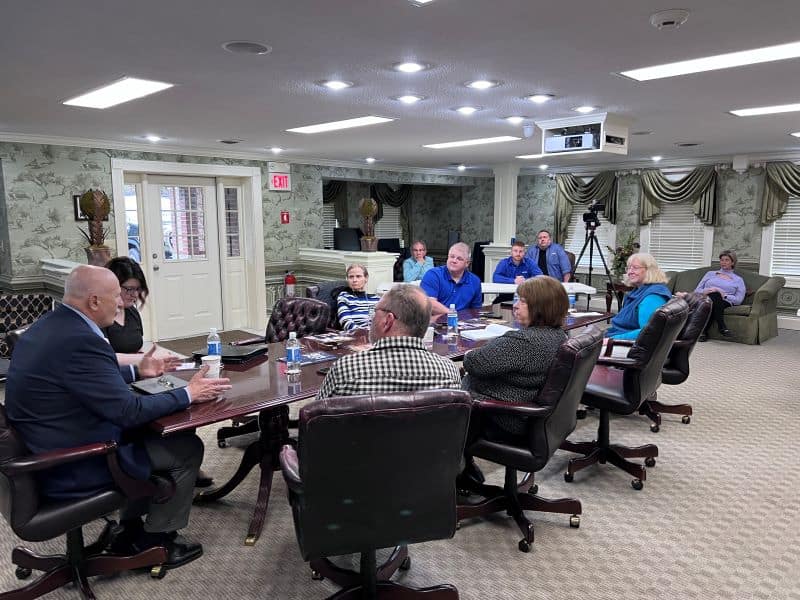
Whether it’s Kentucky or the Dakotas or anywhere rural, leaders can unlock community potential. Photo by Deb Brown.
I use the word “catalyst” to define this organization because collectively, as a group of volunteer local leaders, they are accelerating change in their community by strategically overcoming barriers and reinvesting local funds into projects. This has led to a regeneration of the region.
Happily, by the end of our deep-dive conversation two hours later, this organization’s leadership had come to a consensus. They would become the local catalyst that invests today for a prosperous tomorrow. And they would achieve this through thoughtful investment strategies, high-leverage collaborations, and game-changing economic impacts for the whole region.
So, if you feel stuck in your community, keep reading. You’ll learn how a group of leaders from your community can use this catalyst approach to drive change. You can create a stronger, more connected, and resilient community.
Action 1: Broaden the vision by shifting your perspective to see the community’s big picture. Before you take any action, talk to various parts of the community. This will help you understand the local challenges and priorities.
Action 2: Build stronger connections by networking widely. Meet with local and regional leaders. Also, connect with organizations, residents, and other stakeholders. Engage in partnerships that can drive collaborative action.
Action 3: Develop skills in facilitating group discussions and meetings. Focus on creating inclusive environments where everyone feels heard and valued. Empower others to take an active role in community initiatives. Create opportunities for community members to share their ideas and take ownership of their ideas.
Action 4: Advocate and educate by using your newly found understanding, relationships, and influence. Take the community’s needs and interests to local governments, businesses, and others. Then, seek support, investments, and in-kind resources for community projects.
Action 5: Foster community innovation by supporting and investing in new approaches that address issues in creative ways. Celebrate the achievements and contributions of community members. Highlight successful initiatives to inspire more action.
Action 6: Listen and adapt based on the community’s feedback. Build resilient strategies to ensure your efforts are still relevant and effective. Community dynamics will shift. Staying flexible lets you respond well to new challenges and opportunities.
Action 7: Model great leadership by upholding high ethical standards, building trust, and showing genuine passion for the community’s well-being. Your integrity and enthusiasm can inspire others to join your efforts.
Over and over, I hear catalyst stories from big towns and small towns across South Dakota. They achieve localized success by implementing these collective actions. Join the ranks of community catalysts by gathering local doers to accelerate change in your community.
Rural marketing tip: the name is the claim
Guest post and photo by Debbie Saviano NO GUESSWORK Here! You know exactly what you’re getting! Great burgers and a relaxed boozy atmosphere. Small town businesses have a way of getting to the point. The name is the claim. About the author Debbie Saviano helps people learn how to use LinkedIn, online courses and social […]
Guest post and photo by Debbie Saviano

NO GUESSWORK Here! You know exactly what you’re getting! Great burgers and a relaxed boozy atmosphere. Small town businesses have a way of getting to the point. The name is the claim.
About the author
Debbie Saviano helps people learn how to use LinkedIn, online courses and social media to share and grow their businesses. She lives near a small town in north Texas. Find her on LinkedIn.
Test your business idea with small steps: starting a quilt retreat
Uniontown, Washington, (population 300) has a strong base of arts, artisan and craft entrepreneurship. When I toured Uniontown, a woman spoke up who wants to start a quilt retreat, a place for people to come and quilt together. More than a local quilting bee, she’s imagining a full retreat space. She owns a historic home […]

Want to host a quilting retreat? Take small steps to get it started. USDA photo by Bob Nichols
Uniontown, Washington, (population 300) has a strong base of arts, artisan and craft entrepreneurship. When I toured Uniontown, a woman spoke up who wants to start a quilt retreat, a place for people to come and quilt together. More than a local quilting bee, she’s imagining a full retreat space. She owns a historic home that was the site of an old convent in the 1890s. There’s an outbuilding that would be a great retreat location.
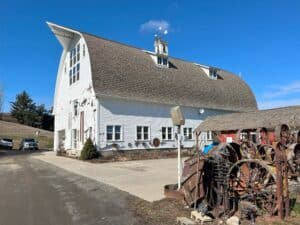
Uniontown, Washington, is home to the Artists at the Dahmen Barn, a shared arts and crafts gallery and studio space. The whole town has a strong cultural scene. Photo by Becky McCray.
The old way: Build it and expect them to come
The old way to get started would be to do all the costly renovations first. Then she can organize the first event all herself, and then market it to attract people. If no one or only a few people are ready to sign up, the failure is all on her. She didn’t market it well enough, she didn’t design it in the way that the market wanted or she just didn’t work hard enough.
New way: Idea Friendly
The Idea Friendly way is to build it together. Give as many people as possible a small but meaningful role in designing and creating the event, the space and the community. Here’s how to apply the Idea Friendly Method to her quilt retreat business idea.
Gather Your Crowd
Since she has connections with other quilters online, she could start with a virtual quilting event to gather people to her idea.
Could she start a virtual quilt project that gave more people a small but meaningful role?
Could she hold online sessions to gather people around the idea?
Each conversation with others will bring her new ideas and inspiration. It will draw more people to be part of the project.
If no one is interested, she’ll find out early, before all the expense and risk.
Build Connections
She could ask her newly-gathered crowd for ideas and for help finding the resources she needs.
Rather than buy enough quilting equipment for all the participants in future retreats, could she find connections to borrow equipment just for the first event?
Do some people want to play a part by helping with marketing, or travel arrangements?
Take Small Steps
Rather than wait to design and build the ultimate retreat space, she can start with these small virtual steps and community building. Then she can step up to hold a very small first test retreat, and keep building from there.
The Idea Friendly Method helps you test your ideas in tiny, temporary ways, often together with another business.
Subscribe to SmallBizSurvival.com
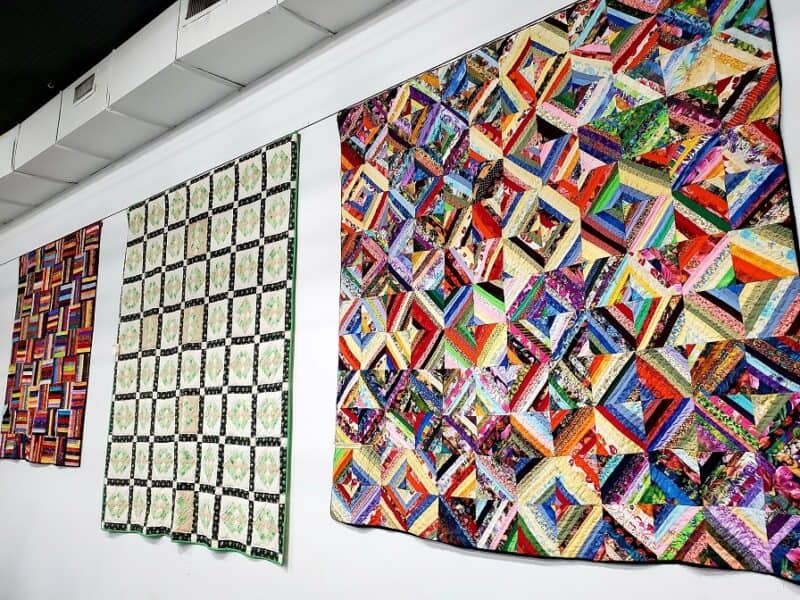
Pet friendly business opportunities
Any business can offer pet friendly amenities In 2023, SaveYour.Town identified pet friendly communities as a Top Topic. Here’s an example of a business offering a pet friendly amenity. In Palouse, Washington, a local veterinarian has an office in the downtown. Out front, they’ve installed a small patch of artificial turf as a pet relief […]
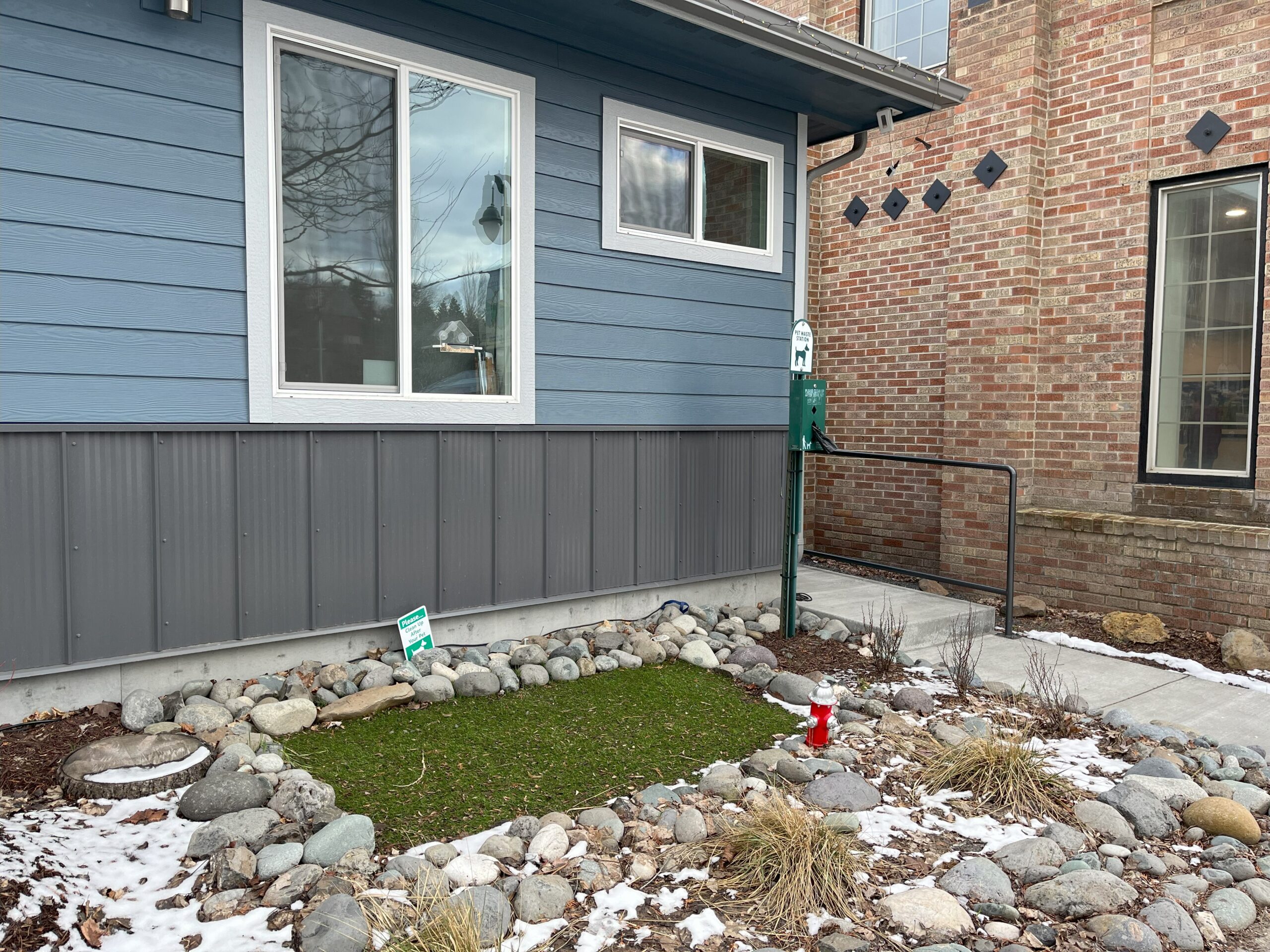
Here’s a pet friendly business in Palouse, Washington, with a pet relief station. Photo by Becky McCray.
Any business can offer pet friendly amenities
In 2023, SaveYour.Town identified pet friendly communities as a Top Topic.
Here’s an example of a business offering a pet friendly amenity. In Palouse, Washington, a local veterinarian has an office in the downtown. Out front, they’ve installed a small patch of artificial turf as a pet relief station. They added a cleanup bag dispenser on a pole and a tiny fire hydrant. It’s not a huge expense, but it adds a big benefit to anyone walking a dog downtown.
Pet friendly benefits
Any business in any small town can take advantage of the pet-friendly trend. Adding pet friendly amenities could attract more customers and clients. It also helps build a stronger sense of community. Pet-loving employees will also love adding pet-friendly features.
Even in tiny towns
We’ve noticed a boom in pet grooming businesses, even in small towns like Stratton, Colorado, population 600.
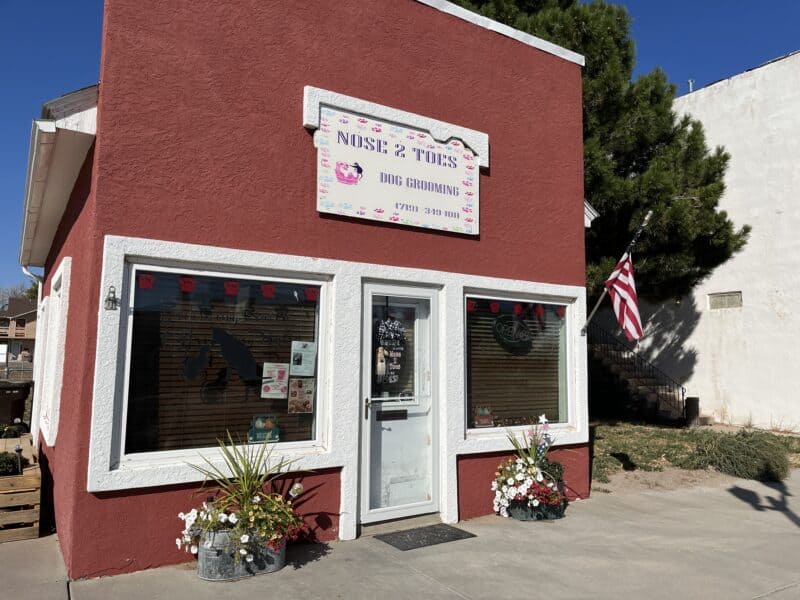
Nose 2 Toes Dog Grooming in Stratton, Colorado, draws customers in with a well maintained building facade, flowers out front and a flag display. Photo by Becky McCray.
Seasonal businesses: post signs year-round
Marketing tip: keep signs up year-round even if you’re a seasonal business. When I toured several small towns in Washington and Idaho with the Inland Northwest Partners, I noticed many part-time and seasonal businesses did not have signs up during their off season. In the town of Deary, Idaho, (population 500) there is a wine […]
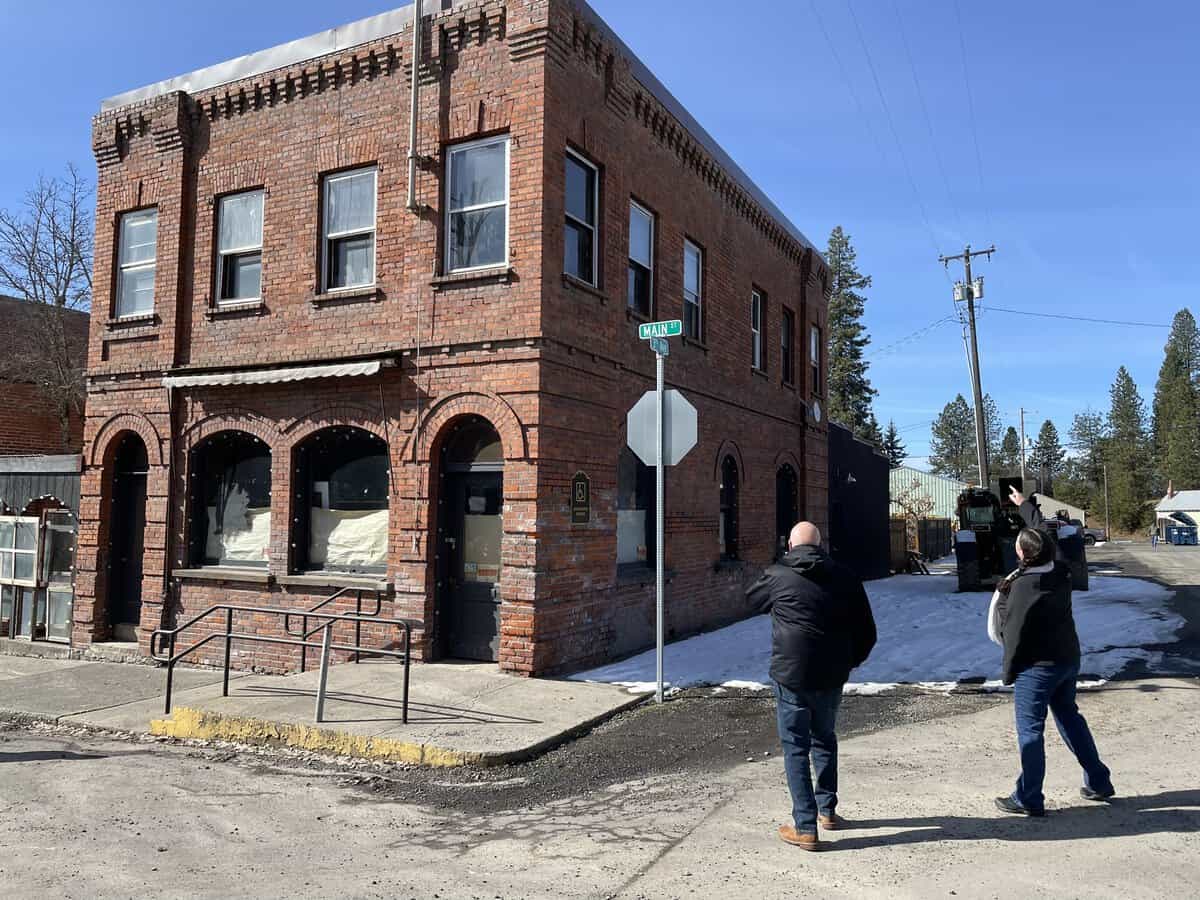
This building looks like it is in good repair, but there’s no way to tell by looking that it’s an active seasonal business. Photo by Ana Blaisdell.
Marketing tip: keep signs up year-round even if you’re a seasonal business.
When I toured several small towns in Washington and Idaho with the Inland Northwest Partners, I noticed many part-time and seasonal businesses did not have signs up during their off season.
In the town of Deary, Idaho, (population 500) there is a wine tasting parlor in a well-kept brick building on a corner in the downtown. Unfortunately there are no signs to indicate that the building is in use as a business during the tourist season. All during the winter it looks like just another empty building with blank paper covering the windows. By the time I toured in March, the paper was water stained and looked unattractive at best.
This contributes to a look of having an empty downtown or being less occupied than it really is. The way your downtown looks affects how people think of your downtown. Looking bad hurts the entire community’s development, which in turn hurts the wine tasting business.
It would be quite easy to create signage that indicates what months during the year the business is open and when it is not, much like operating hours.
I suggested a number of options for the wine tasting room. The owners could paint decorations on the windows, hang a permanent sign on the building, put posters or artwork inside the building to show through the windows, or use perforated decals with the marketing message and keep people from looking through the windows while still admitting light to the interior.
This tip applies to seasonal service businesses just as much as retail businesses. Whether your business is seasonal tourism equipment rentals or tax-season accounting, keep signs up year-round so you don’t look abandoned.
Every business in a small town wants to be part of a thriving local economy. Posting signs year-round on your part-time seasonal business is one way to contribute to that thriving locally economy.
Does your town need a boost of enthusiasm and fresh ideas?
Learn more about my working visits to small towns here.
Learn more about my working visits to small towns here.
These small town neighbors bought vacant buildings, brought them up to code. Here’s what happened next
Waynoka, Oklahoma, had a lot of vacant run-down buildings in their downtown. In a town of 900 people, the prospects didn’t look great. At an all-class reunion, a group of alumni got together and decided to change that. They called themselves Project Waynoka, our friend and early contributor Jeanne Cole said. They started raising money. […]
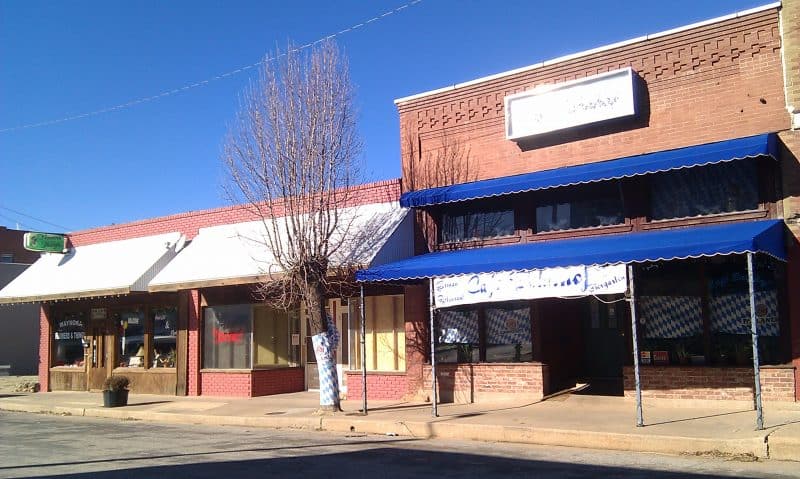
What can small towns do about crumbling buildings in their downtown? They can join together to fix them up and get businesses in them. Our own Jeanne Cole helped to bring this building back in downtown Waynoka. Photo by Becky McCray.
Waynoka, Oklahoma, had a lot of vacant run-down buildings in their downtown. In a town of 900 people, the prospects didn’t look great. At an all-class reunion, a group of alumni got together and decided to change that.
They called themselves Project Waynoka, our friend and early contributor Jeanne Cole said. They started raising money. They bought one building. They raised more money with community events. They scrounged for materials. They rallied volunteer labor. They brought this one building up to code, then sold it.
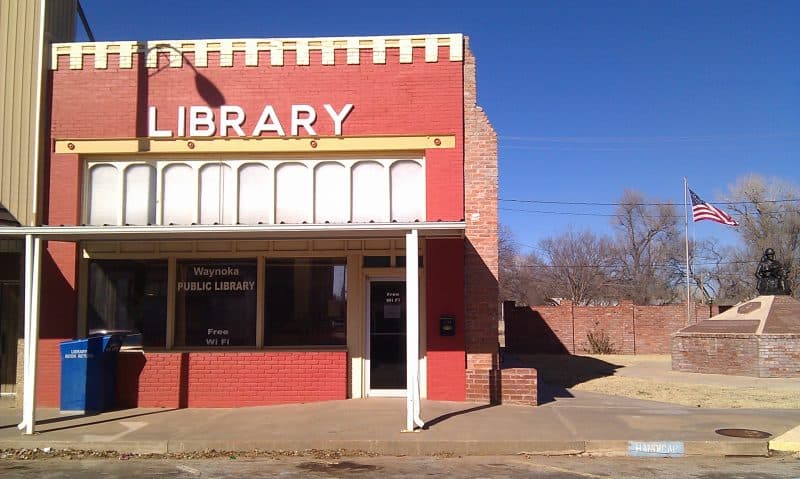
The public library in Waynoka is housed in a building that Project Waynoka rehabilitated. Next door is a vacant lot that the library uses for event space and that features a veterans memorial. Photo by Becky McCray.
With that money, they bought another building. More work, more fundraising, even more work, and there’s another building brought back into productive use.
They just kept saving buildings. Buildings that now house locally-owned businesses. The public library. The popular German restaurant.
A few buildings turned out to be in such bad shape that demolition was the best choice. So they took them down and then cleaned up the empty lots.
After decades of working on the project, the volunteer momentum had run down a bit. One key source of low cost labor was no longer available. But they didn’t quit entirely, they just slowed down.
They took on a big challenge with the old American Legion building. It needed a lot of work. They started with cosmetic improvements to the exterior.
It’s a model that any town can borrow: a small group of people rallying the community to save downtown buildings.
A group of Minneapolis neighbors who did a similar thing, with the added bonus of building cooperatives and nurturing local businesses as part of their project. Read more about it here: These Neighbors Got Together to Buy Vacant Buildings. Now They’re Renting to Bakers and Brewers
Chris Miller, of Adrian, Michigan (pop 21k), told me by email that a group of 22 local investors had pooled resources and bought a downtown building. You can read about it in this report: https://mml.org/placemaking/wp-content/uploads/sites/2/2013/12/casestudy-main-street-adrian.pdf
So that’s one by a private foundation, one by cooperative, and one by LLC.
Beyond the Big Banks: How rural small businesses can Move Their Money locally
The “Move Your Money” campaign wants you to shift your financial resources to local banks and investment opportunities. That makes a lot of sense for small town businesses who care about having a thriving local economy. The 2024 Move Your Money Campaign The American Independent Business Alliance (AMIBA) has been at the forefront of the […]
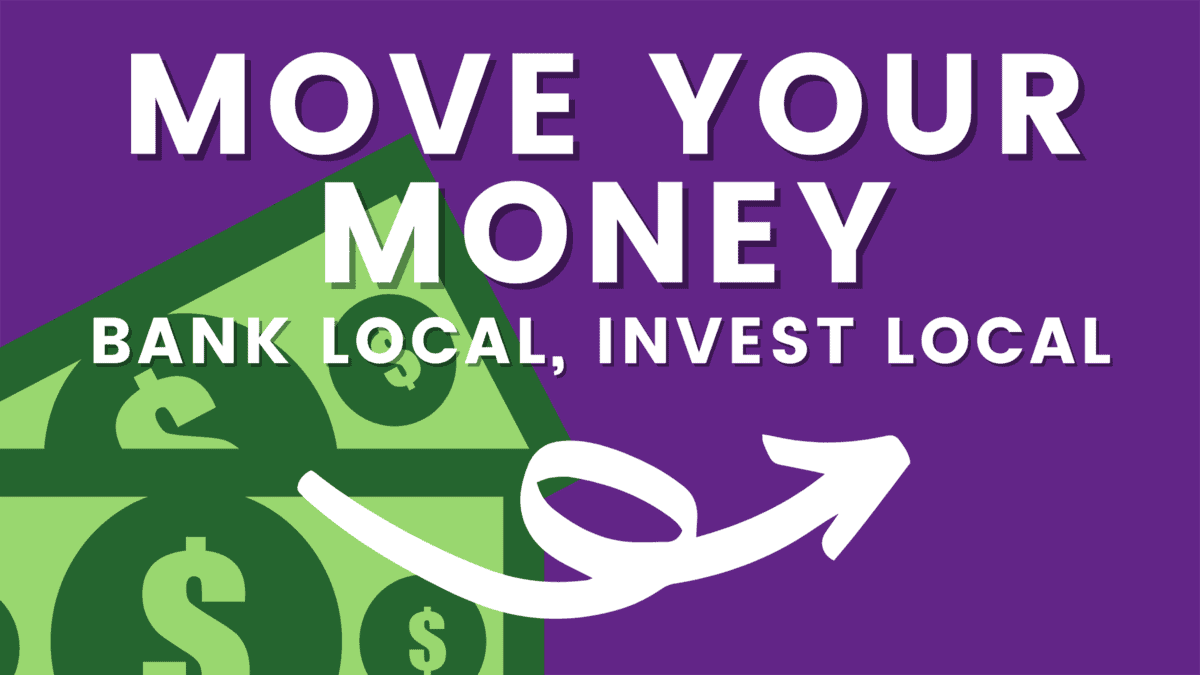
The “Move Your Money” campaign wants you to shift your financial resources to local banks and investment opportunities. That makes a lot of sense for small town businesses who care about having a thriving local economy.
The 2024 Move Your Money Campaign
The American Independent Business Alliance (AMIBA) has been at the forefront of the “Move Your Money” campaign, offering resources and support for those interested in making the switch to local banking. This year, AMIBA has emphasized the critical role that local banks and credit unions play in fostering economic resilience within small towns and rural communities. By banking locally, businesses and individuals not only enjoy more personalized service but also contribute to a financial ecosystem that directly benefits their immediate environment.
Key Points for Rural Small Businesses
For rural small businesses, the decision to bank locally can have far-reaching implications. Here are some practical benefits from moving your money:
- Strengthening Local Economies: Every dollar deposited in a local bank or invested in a local business circulates within the community, amplifying its economic impact. This circulation helps to create jobs, fund local projects, and support the growth of other small businesses.
- Access to Tailored Financial Services: Local banks often have a deeper understanding of the unique challenges and opportunities faced by rural businesses. This insight allows them to offer more tailored financial products and advice, which can be crucial for businesses looking to navigate the complexities of rural economies.
- Building Community Connections: Banking locally facilitates relationships that go beyond mere transactions. It fosters a sense of community and mutual support, where businesses and banks work together towards common goals.
- Advocacy and Support: AMIBA and other organizations provide a wealth of resources for businesses interested in moving their money. From virtual screenings that explore cooperative economies to discussions on local investing, these platforms offer valuable insights and networking opportunities.
How local is your bank?
As rural and small town banks merge and change, it can be tough to tell if your once-local bank really is still local. With regulations pushing small town banks to buy other small banks, your bank now might be semi-local or owned somewhere else. But does that make them a bad neighbor?
Even regionally owned banks are better for your community than giant national or international banks. Here are some practical ways to decide just how local your local bank acts.
- Check the current ownership structure: Look for information about the bank’s ownership structure on their website or by contacting the bank directly. Community-owned banks are typically owned by share-holding local residents, while regional or commercial banks may be owned by larger corporations or shareholders from outside the community.
- Research the recent history: Local banks often have a long history in the community, but may have shifted priorities if ownership changed. Check the bank’s website or media stories for information about its recent community-focused initiatives.
- Visit the local branch: Visit in person to get a sense of the bank’s community involvement. Look for local causes featured in the lobby. See what local ties are visible.
- Ask for recommendations: Reach out to other local businesses, community leaders, or residents to ask for their recommendations on local banks. They may have personal experiences or insights that can help you make an informed decision.
How to move your money
Check the checklist in Move Your Money and Bank Local.
Advocate for Local Banking
Catch up with additional local banking resources from the Institute for Local Self-Reliance.
The “Move Your Money” campaign is more than just a call to action; it’s a movement towards sustainable, community-focused banking. For rural small businesses, the benefits of participating extend beyond financial gains. It’s about building a resilient local economy that can withstand the ebbs and flows of the broader financial system.


